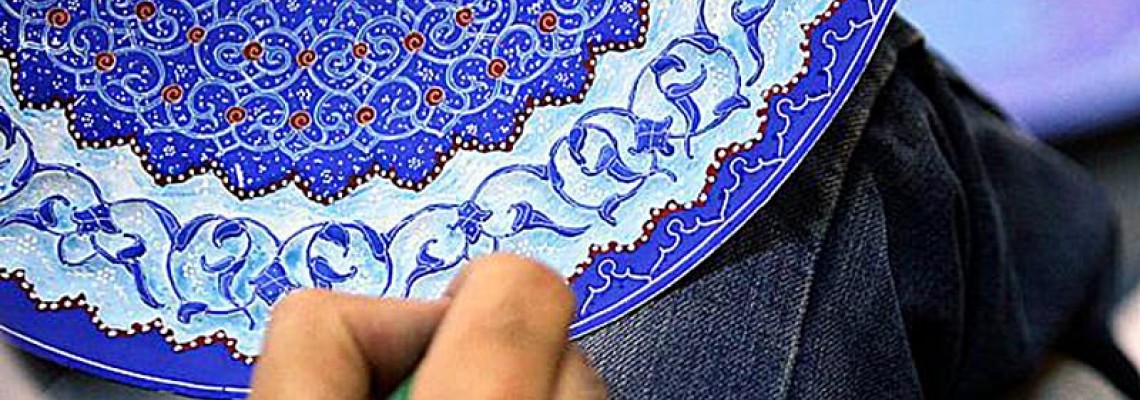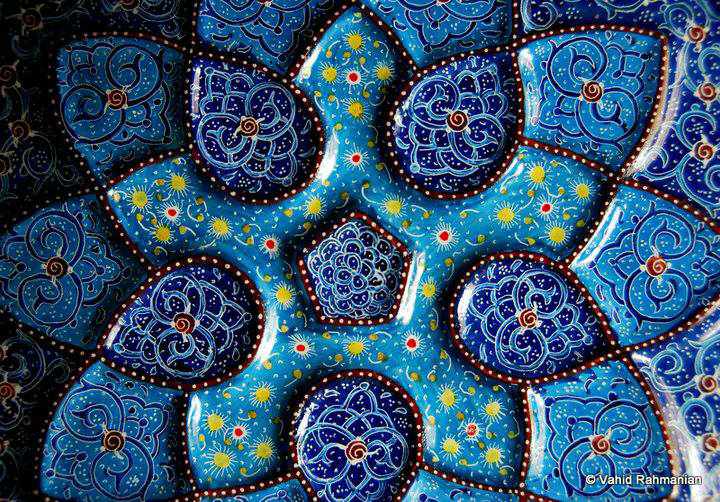
Minakari
What is the meaning of minakari?
Enamel is called "blue sky" in Persian. It is also associated with the word Mino, which means paradise. This craft itself embodies the azure blue of the sky in its many layers that seem to move towards eternity. This may be one of the reasons why this artwork is also called enamel or sky show. The closest equivalent to this art is pottery, also called vitreous enamel or porcelain enamel. Enamel is applied to various materials such as metal, stone, glass, ceramics, and pottery.
What is minakari and how is it made?
Enameling or Iranian enameling is a type of art in which special colors are fused into a piece of metal or tile along with a layer of glass, also called enamel, during a heating process. Generally, this process involves applying a layer of glass to another material that can withstand high temperatures ranging from 750 to 850 °C.
Since the successful completion of this process requires the use of pure metals, metals such as silver, copper, and sometimes gold is used to produce this type of valuable Persian craft. Fine silver is mainly used to make pottery such as bowls and spoons, jars and artwork as colors combine better with pure metals. Copper is also widely used for making pottery and objects due to its high flexibility. Gold, however, is mainly used to make enamel jewelry because its luster makes the pieces look brighter and more beautiful. Although materials other than metals are also used, such as ceramics, tiles, and glass, metals are more popular.
The process of making enamel products is quite simple. First, blacksmiths prepare the object and shape it into the desired form. The piece is then coated with a layer of white glaze and heated to a temperature of about 750 degrees. The product is then covered with another layer of a higher quality glaze and heated again, a process that can be repeated several times. A variety of materials can be used as glazes. However, silicon enamel, potassium, lead, tin, magnesium, boric acid, zirconium and kaolin glazes are commonly used for this process.
The product is then designed with various geometric patterns, symmetrical patterns, traditional themes, and sometimes religious motifs. To interpret these motifs, one must look at the cornerstone of one of the oldest belief systems in Iran, namely Mithraism. In Mithraism, the sun plays an important role. In enamels, the medallions in the center of enamel artwork depict the sun as the earth revolves around it. In addition, miniature patterns and Islamic art (a type of Islamic art) have softened pottery. While these patterns are mostly painted in blue, various other chemical and organic colors are also used, such as white, yellow, cyan, blue, red, brown, purple, green, and black. After the final design, the product is placed in the kiln one last time to stabilize its color and design.

What types of minakari artifacts are made?
These designs and patterns usually divide enamel artifacts into three groups:
- Painting enamel
- Checkerboard enamel, called Chaharkhaneh
- Cavity enamel
What makes Minakari products so special?
A lot of care and taste goes into making an enamel object. A piece of enamel should be formed based on a design that will later be imprinted by the artist's hands. It also needs to be durable, as the heat itself can damage the body or cause the designs to peel off the product. For this reason, pottery is an art form that is used outside Iran as decoration or as a souvenir.
Enameling is the product of eyes that see the depths of the sky, admire the beauty of the world around them, and seamlessly portray the harmony of heaven and earth. Come to Isfahan, hold a work of art in your hand. Do not you feel like you are holding the world in your hands?

Leave a Comment